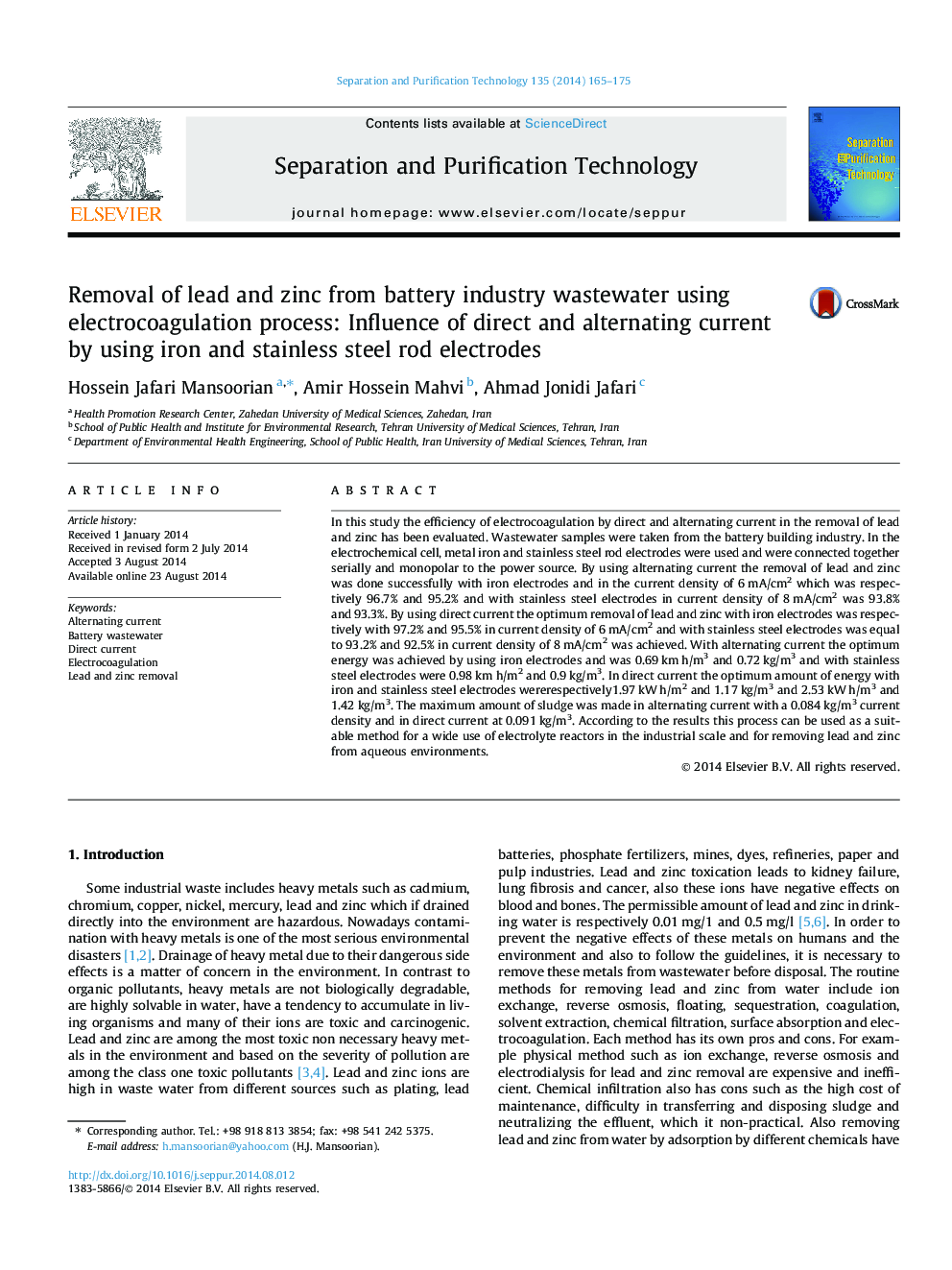| کد مقاله | کد نشریه | سال انتشار | مقاله انگلیسی | نسخه تمام متن |
|---|---|---|---|---|
| 641091 | 1456984 | 2014 | 11 صفحه PDF | دانلود رایگان |
• Using AC the removal of Pb and Zn was 93.8 and 93.3% with stainless steel electrodes.
• Using DC the elimination of Pb and Zn was 97.2% and 95.5% with iron electrodes.
• Using DC the elimination of Pb and Zn was 93.2% and 92.5% with stainless steel electrodes.
In this study the efficiency of electrocoagulation by direct and alternating current in the removal of lead and zinc has been evaluated. Wastewater samples were taken from the battery building industry. In the electrochemical cell, metal iron and stainless steel rod electrodes were used and were connected together serially and monopolar to the power source. By using alternating current the removal of lead and zinc was done successfully with iron electrodes and in the current density of 6 mA/cm2 which was respectively 96.7% and 95.2% and with stainless steel electrodes in current density of 8 mA/cm2 was 93.8% and 93.3%. By using direct current the optimum removal of lead and zinc with iron electrodes was respectively with 97.2% and 95.5% in current density of 6 mA/cm2 and with stainless steel electrodes was equal to 93.2% and 92.5% in current density of 8 mA/cm2 was achieved. With alternating current the optimum energy was achieved by using iron electrodes and was 0.69 km h/m3 and 0.72 kg/m3 and with stainless steel electrodes were 0.98 km h/m2 and 0.9 kg/m3. In direct current the optimum amount of energy with iron and stainless steel electrodes wererespectively1.97 kW h/m2 and 1.17 kg/m3 and 2.53 kW h/m3 and 1.42 kg/m3. The maximum amount of sludge was made in alternating current with a 0.084 kg/m3 current density and in direct current at 0.091 kg/m3. According to the results this process can be used as a suitable method for a wide use of electrolyte reactors in the industrial scale and for removing lead and zinc from aqueous environments.
Journal: Separation and Purification Technology - Volume 135, 15 October 2014, Pages 165–175
